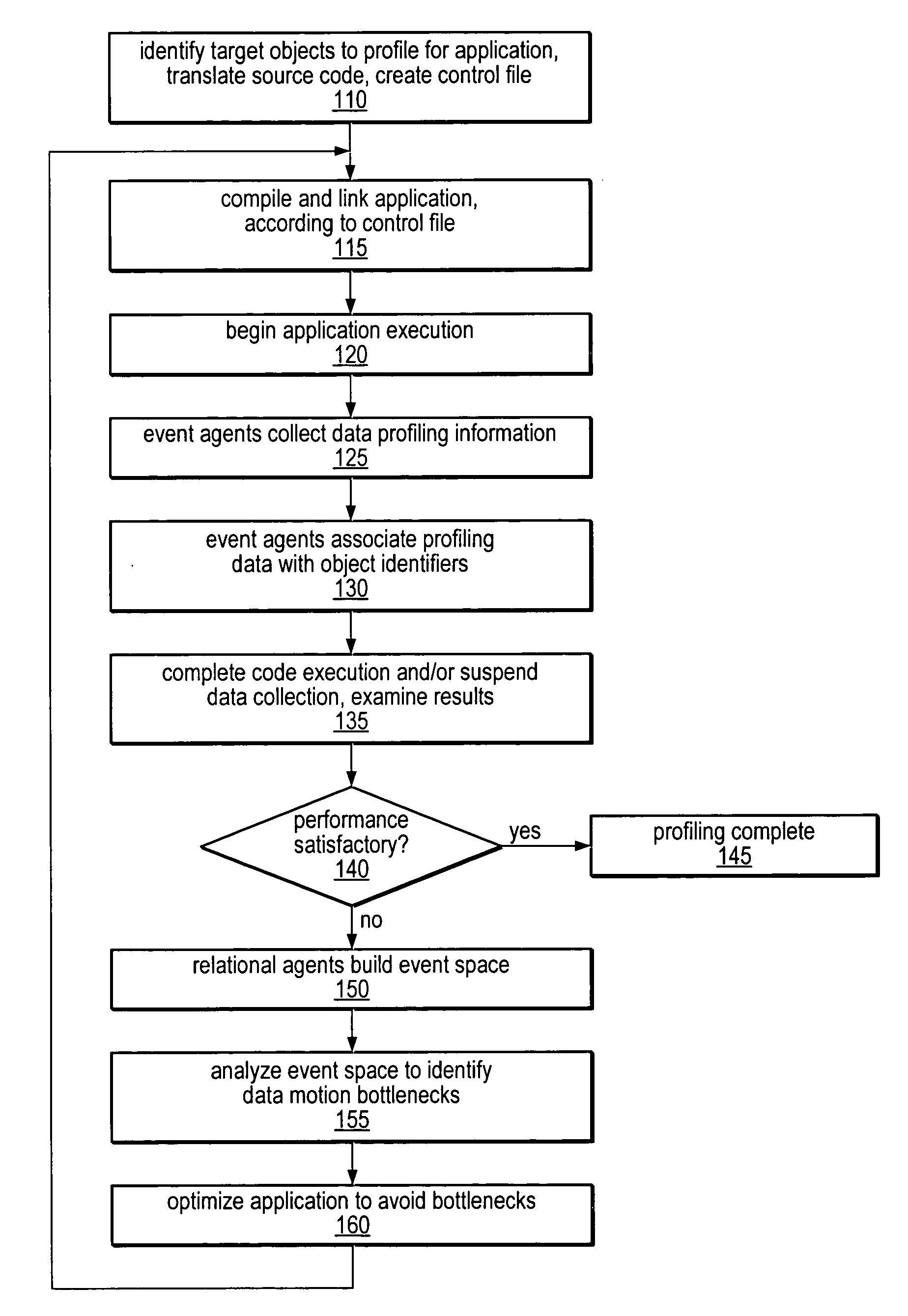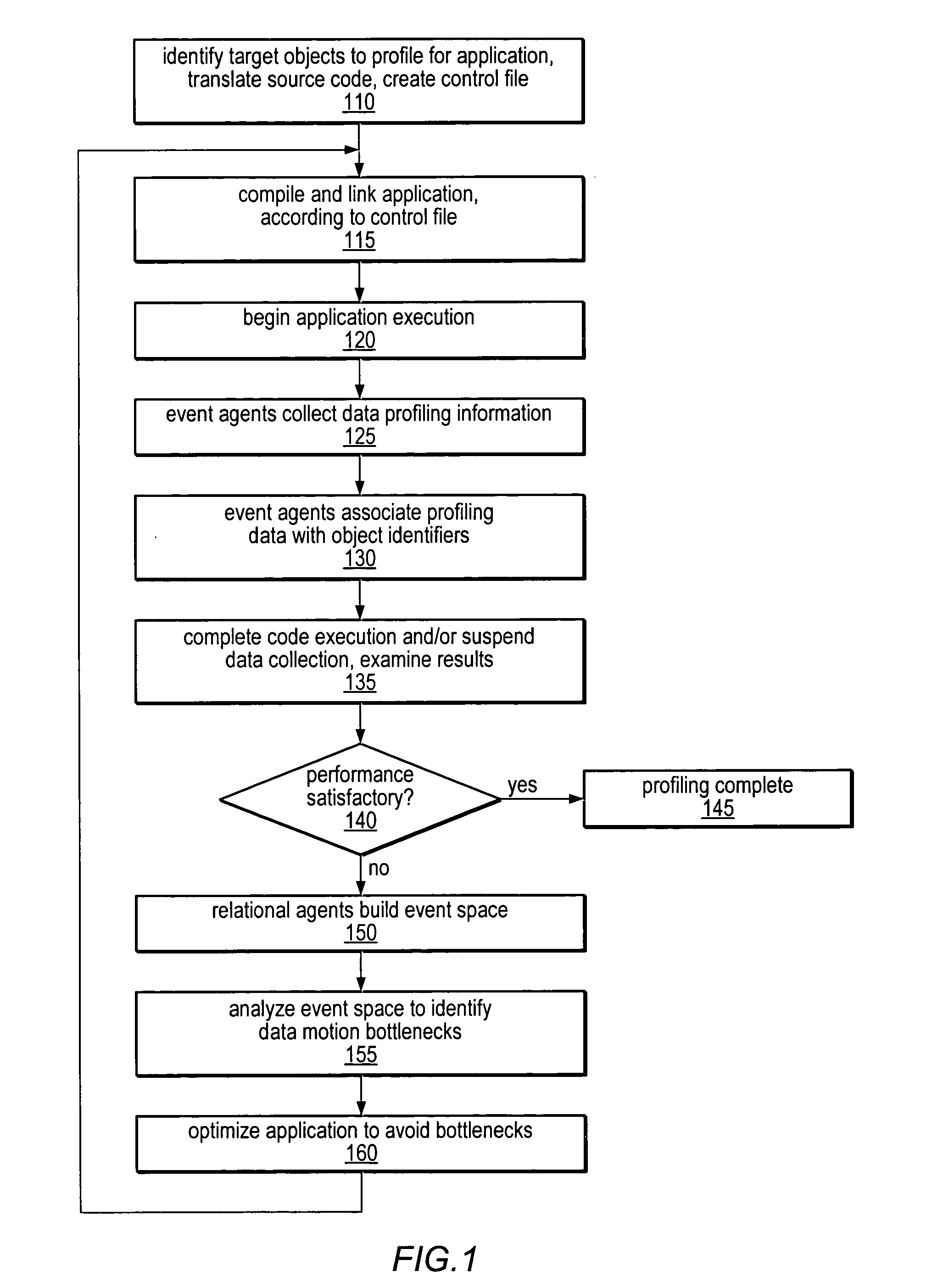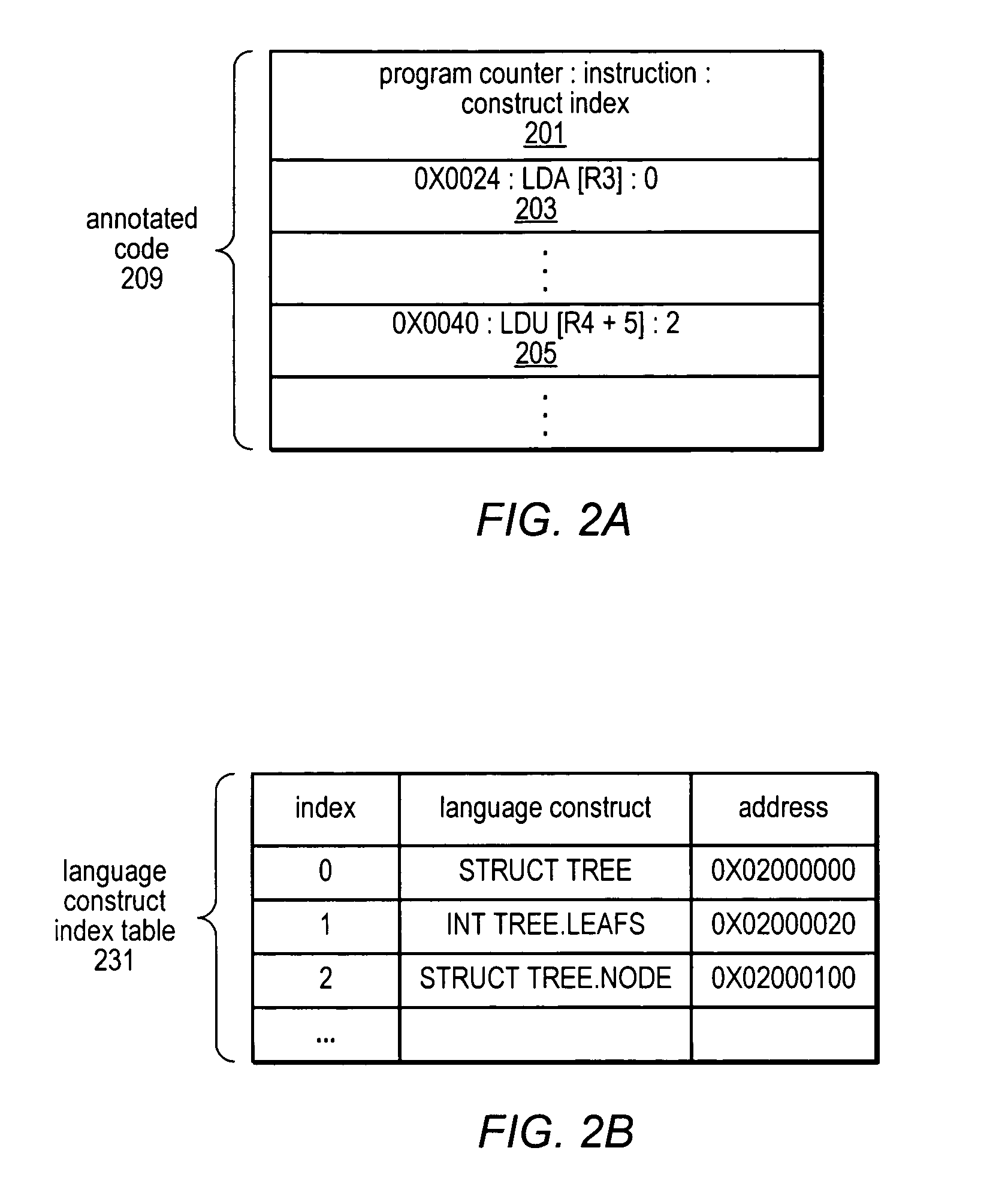Method and apparatus for specification and application of a user-specified filter in a data space profiler
a data space profiler and filter technology, applied in the field of computing systems, can solve the problems of small fraction of the overall cost of many computer systems, high cost of central processing units (cpus), and processor costs, and achieve the effects of optimizing application performance, minimizing or avoiding such bottlenecks, and facilitating the identification of performance bottlenecks
- Summary
- Abstract
- Description
- Claims
- Application Information
AI Technical Summary
Benefits of technology
Problems solved by technology
Method used
Image
Examples
Embodiment Construction
[0042]Modern computer systems are using increasing numbers of ever-faster processors to solve larger and larger problems. However, performance of those processors may be limited by the need to supply data to them at ever increasing rates. In some systems, a hierarchy of caches between the processors and main memory may be used to improve performance. In these systems, the processors may run at full speed when using data from the caches closest to the processors, but may be frequently stalled loading data from or storing data to the primary caches through secondary or tertiary caches and, ultimately, to or from main memory. Understanding how an application's data is structured in memory and how it passes from memory through the cache hierarchy may facilitate understanding and improving the performance of applications on these systems.
[0043]The data space profiler described herein may provide per-instruction details of memory accesses in the annotated disassembly, and may provide data...
PUM
 Login to View More
Login to View More Abstract
Description
Claims
Application Information
 Login to View More
Login to View More - R&D
- Intellectual Property
- Life Sciences
- Materials
- Tech Scout
- Unparalleled Data Quality
- Higher Quality Content
- 60% Fewer Hallucinations
Browse by: Latest US Patents, China's latest patents, Technical Efficacy Thesaurus, Application Domain, Technology Topic, Popular Technical Reports.
© 2025 PatSnap. All rights reserved.Legal|Privacy policy|Modern Slavery Act Transparency Statement|Sitemap|About US| Contact US: help@patsnap.com



